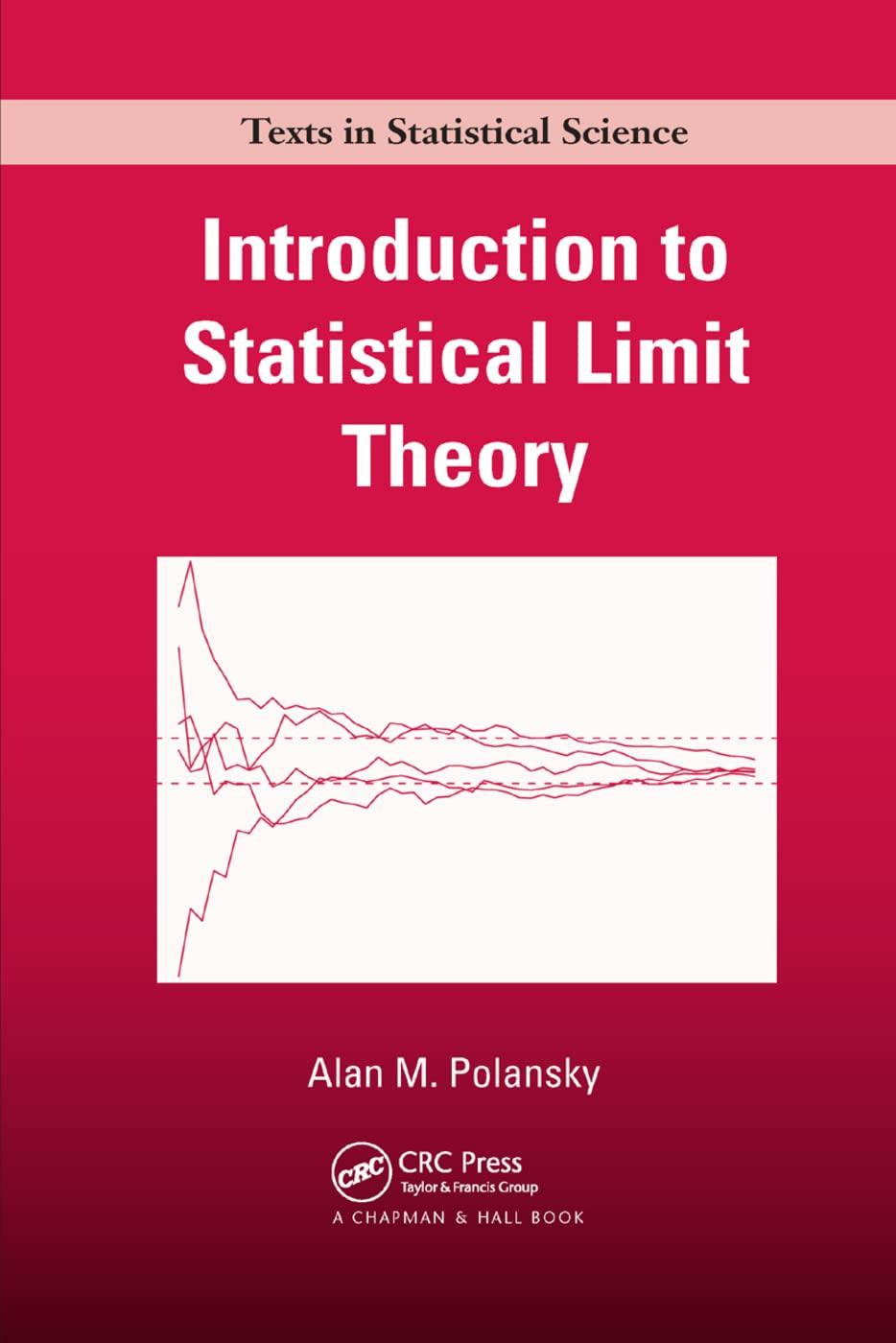The interpretation of frequentist results of Bayes estimators is somewhat difficult because of the sometimes conflicting views
Question:
The interpretation of frequentist results of Bayes estimators is somewhat difficult because of the sometimes conflicting views of the resulting theoretical properties. This experiment will look at two ways of looking at the asymptotic results of this section.
a. Write a program in \(\mathrm{R}\) that simulates a sample of size \(n\) from a \(\mathrm{N}(0,1)\) distribution and computes the Bayes estimator under the assumption that the mean parameter \(\theta\) has a \(\mathrm{N}\left(0, \frac{1}{2}ight)\) prior distribution. Repeat the experiment 1000 times for \(n=10,25,50\) and 100, and make a density histogram of the resulting Bayes estimates for each sample size. Place a comparative plot of the asymptotic NORmaL distribution for \(\tilde{\theta}_{n}\) as specified by Theorem 10.15. How well do the distributions agree, particularly when \(n\) is larger?
b. Write a program in \(\mathrm{R}\) that first simulates \(\theta\) from a \(\mathrm{N}\left(0, \frac{1}{2}ight)\) prior distribution and then simulates a sample of size \(n\) from a \(\mathrm{N}(\theta, 1)\) distribution, conditional on the simulated value of \(\theta\). Compute the Bayes estimator of \(\theta\) for each sample. Repeat the experiment 1000 times for \(n=10,25,50\) and 100, and make a density histogram of the resulting Bayes estimates for each sample size. Place a comparative plot of the asymptotic NoRMAL distribution for \(\tilde{\theta}_{n}\) as specified by Theorem 10.15. How well do the distributions agree, particularly when \(n\) is larger?
Step by Step Answer:





